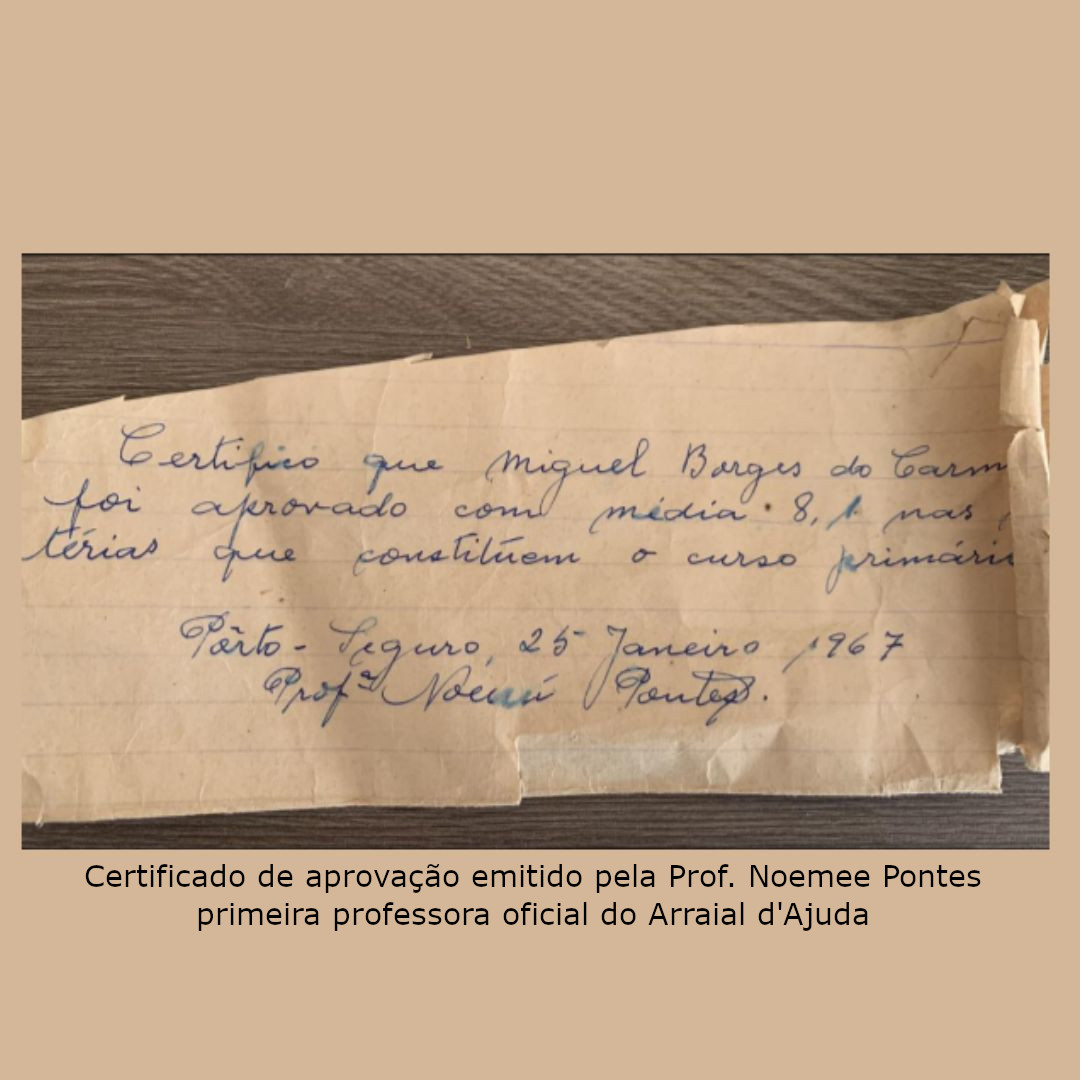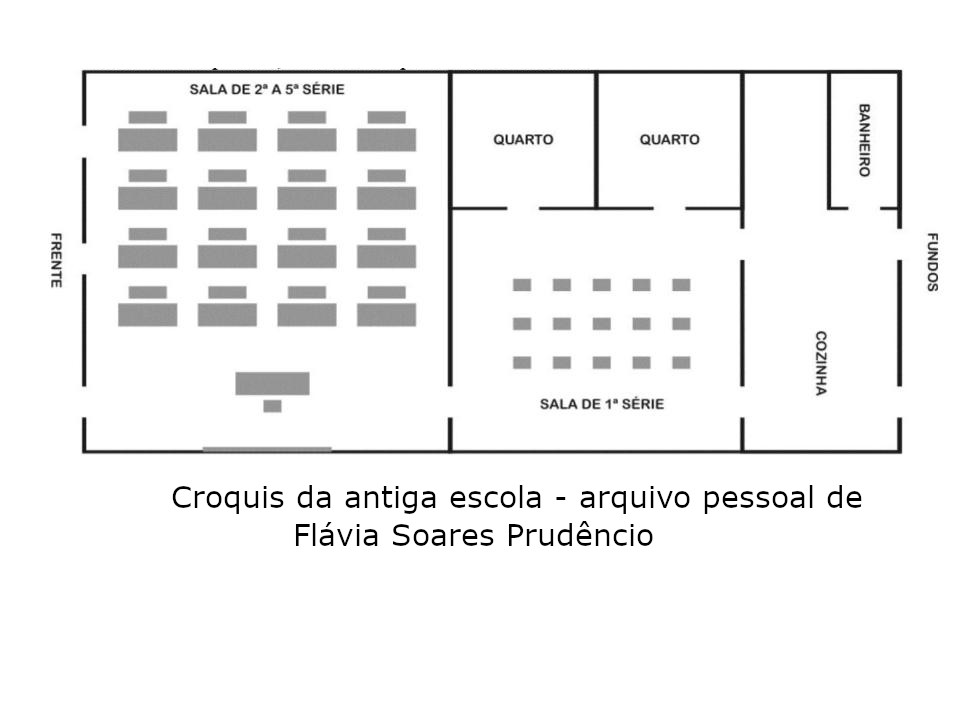"The First School"
The origins of formal education in Arraiald'Ajuda date back to the 1920s. In 1925, a teacher called HonorinaPassos taught her classes in the square, under the historic tamarind tree.
But it was in 1940 that Arraial got its first school, in this building.That year, the village received its first graduated teacher: Noemee Pontes, from Salvador.
Teacher Noemee lived in the same house, which consisted of a large room with a division where school practices took place, a kitchen, and two bedrooms and a bathroom. One of the rooms was used as a storage room for church goods, such as processional floats.
The building, which belonged to the Diocese, had been given over for the operation of the school, which was named Antônio Ricaldi in honor of the deputy.The school was multigrade, with the teacher taking care of students from different grades in the same room, a common practice when there were problems with space, and with approximately 50 students.
Classes were held in two shifts, involving all the children in the village. The school was open every day except Sunday.
Students started with the alphabet and then moved on to the primer. In the other grades they did dictation, writing, copying (called translating) and the four operations. There was also religious education and the practice of national anthems. The girls were also taught embroidery.
For decades, students from Arraial studied up to the 5th grade, because they couldn't afford to study in other towns. It was only in 1963 that the Porto Seguro Gymnasium was inaugurated and, from that year on, students were able to complete another stage of their schooling at the town's seat.
The teacherNoemee Pontes, Arraiald'Ajuda's first graduated teacher, left us on March 15, 1984, in the city of Salvador.
Source: PRUDÊNCIO, Flávia Soares."First School of Arraiald'Ajuda: recovering school memory from oral accounts" - 2018,
Find out about the Square's schedule of events
The origins of formal education in Arraiald'Ajuda date back to the 1920s. In 1925, a teacher called HonorinaPassos taught her classes in the square, under the historic tamarind tree.
But it was in 1940 that Arraial got its first school, in this building.That year, the village received its first graduated teacher: Noemee Pontes, from Salvador.
Teacher Noemee lived in the same house, which consisted of a large room with a division where school practices took place, a kitchen, and two bedrooms and a bathroom. One of the rooms was used as a storage room for church goods, such as processional floats.
The building, which belonged to the Diocese, had been given over for the operation of the school, which was named Antônio Ricaldi in honor of the deputy.The school was multigrade, with the teacher taking care of students from different grades in the same room, a common practice when there were problems with space, and with approximately 50 students.
Classes were held in two shifts, involving all the children in the village. The school was open every day except Sunday.
Students started with the alphabet and then moved on to the primer. In the other grades they did dictation, writing, copying (called translating) and the four operations. There was also religious education and the practice of national anthems. The girls were also taught embroidery.
For decades, students from Arraial studied up to the 5th grade, because they couldn't afford to study in other towns. It was only in 1963 that the Porto Seguro Gymnasium was inaugurated and, from that year on, students were able to complete another stage of their schooling at the town's seat.
The teacherNoemee Pontes, Arraiald'Ajuda's first graduated teacher, left us on March 15, 1984, in the city of Salvador.
Source: PRUDÊNCIO, Flávia Soares."First School of Arraiald'Ajuda: recovering school memory from oral accounts" - 2018,
Find out about the Square's schedule of events

 Port
Port Esp
Esp Eng
Eng

